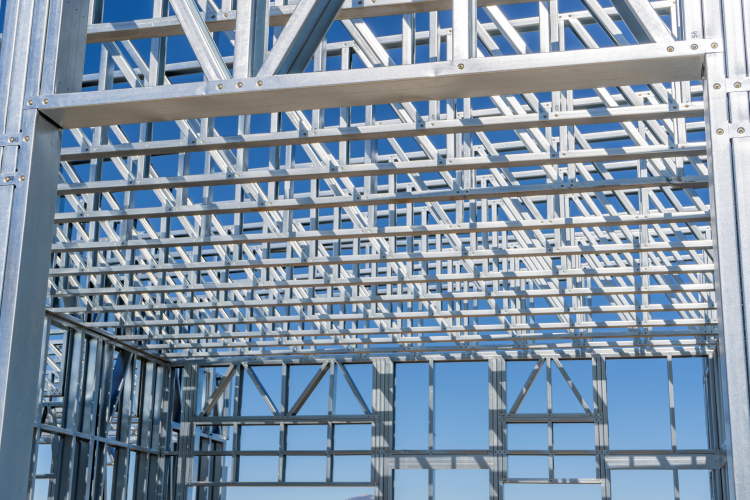In recent years, floods have become increasingly common and devastating natural disasters, affecting communities and businesses worldwide, making them the most common natural disaster globally. As these extreme weather events accelerate, the frequency and intensity of floods are expected to rise, causing significant damage to infrastructure and properties. In response to this growing challenge, the construction industry is exploring innovative solutions to build back better with more resilience. One such solution gaining traction is the use of cold formed steel (CFS) framing. This modern method of construction offers numerous advantages that make it particularly suited for flood-prone areas.

The Rising Threat of Flooding
Floods are among the most destructive natural disasters, affecting millions of people annually and causing billions of dollars in damage. Severe floods in recent years including the Louisiana floods in 2016, the Western Europe floods in 2021 which flooded Germany, Belgium, the Netherlands, and surrounding countries, and the unprecedented monsoon rains that caused a social crisis in Pakistan in 2022.
These floods have not only destroyed homes, businesses and infrastructure but also taken lives and caused catastrophic economic damage.
Traditional building materials and methods often fall short in the face of such overwhelming natural forces. Wooden structures, for instance, can suffer from water damage, mold growth, and structural weakness post-flooding. Masonry buildings, while sturdier, are not immune to the long-term effects of water exposure, leading to costly repairs and rebuilding efforts.
Why Steel Framing
For communities and businesses recovering from recent floods, transitioning to steel framing can be a strategic move toward long-term resilience.
Steel framing presents a compelling alternative for constructing flood-resistant buildings. Here are several reasons why cold formed steel framing is an excellent choice for rebuilding in flood-prone areas:
Durability and Strength
Cold-formed steel is strong and durable, capable of withstanding significant forces without deforming. Its high strength-to-weight ratio means that CFS structures can endure the dynamic pressures exerted by floodwaters better than traditional materials. Unlike wood, steel does not warp, crack, or rot when exposed to water, ensuring the structural integrity of buildings even after a flood event.
Resistance to Mold and Mildew
One of the major post-flooding issues with traditional materials like wood is the widespread growth of mold and mildew, which can pose serious health risks. Steel, being inorganic, does not support mold growth, thereby reducing health hazards and lowering maintenance costs over the building's lifespan.
Non-Combustible Properties
In some cases, flooding can be accompanied by electrical shorts and gas leaks, leading to fires. Steel framing is non-combustible, providing an added layer of safety and reducing the risk of fire-related damage in the aftermath of a flood.
Sustainability
Cold-formed steel is not only resilient but also environmentally friendly. It is recyclable and can be reused multiple times without losing its properties. This aligns well with the growing emphasis on sustainable construction practices.

Cost-Effectiveness
While the initial cost of steel framing can be higher than traditional wood framing, the long-term savings are substantial. Reduced maintenance, lower repair costs, and enhanced durability contribute to significant financial benefits over the life of the building. Insurance premiums for steel-framed buildings can also be lower due to their resilience to various types of damage.
Insurance
Using steel framing can offer substantial financial advantages, particularly in terms of insurance savings. Steel's resilience against catastrophic damage from wind, tornadoes, and hurricane events and its robustness against fire and pests reduces the likelihood of extensive damage, resulting in fewer insurance claims and consequently, lower premiums. Additionally, steel framing mitigates water intrusion issues caused by snow, rain, and flooding, which can lead to expensive repair and replacement costs due to mold and mildew.
This reliability and reduced risk of claims can translate into lower insurance premiums, making steel framing a financially savvy option for developers aiming to create durable, cost-efficient, and attractive properties.
Summary
As the world faces the escalating threat of flooding due to extreme global weather events, adopting resilient building practices is no longer optional - it is imperative. CFS framing offers a robust, sustainable, and cost-effective solution for communities and businesses looking to build back better. By investing in steel framing, structures can be created that not only withstand the forces of nature but also provide a safer, healthier, and more sustainable environment for future generations. It is the time to embrace this innovative construction method and pave the way for a more resilient future.







